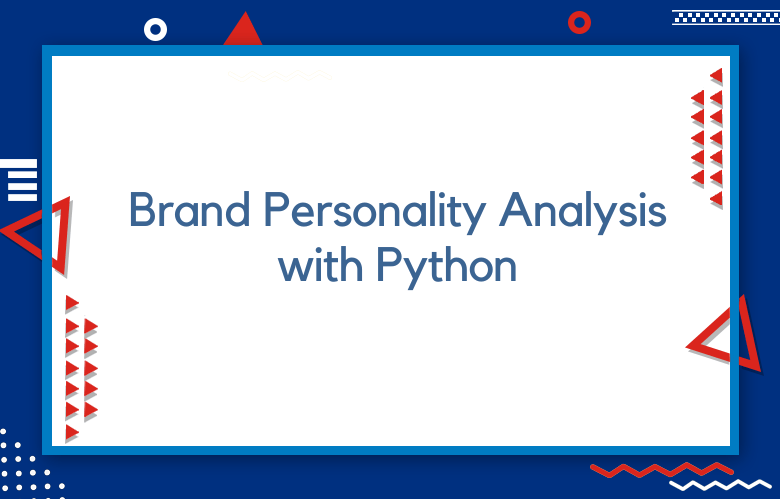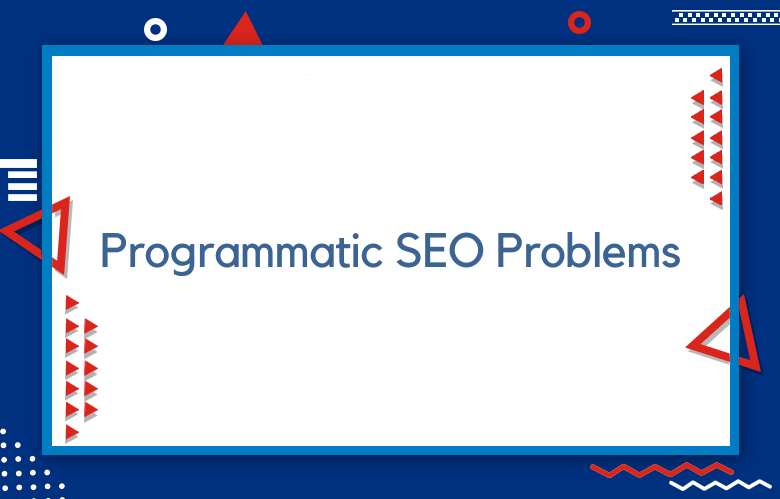An In-depth Look at Brand Personality Analysis with Python

Brand personality analysis is a great way to gain insights into how customers perceive your brand. By analyzing customer sentiment about your brand, you can better understand what resonates with them and make informed decisions on how to tailor your brand messaging.
Brand personality analysis can do manually or through automated processes like Natural Language Processing (NLP) and Machine Learning (ML)—two popular tools used in data science.
We’ll take an in-depth look at how Python can be used to automate brand personality analysis.
Brand personality analysis is an essential step in creating a successful brand.
It helps businesses understand how customers perceive their brand, which can be used to make informed decisions about marketing strategies, product offerings, and more.
But what if there was a way to streamline the process of brand personality analysis?
Fortunately, there is the use of Python for brand personality analysis. Let’s break down how it works.
What is Brand Personality?
Brand personality is a set of human characteristics associated with a particular brand.
Marketers use brand personalities to create an emotional connection between consumers and products or services.
It helps distinguish one product from another and makes it easier for consumers to identify with a specific product or service.
In other words, it gives brands a “personality” – something consumers can relate to emotionally.
What is Brand Personality Analysis?
Brand personality analysis involves researching consumer attitudes towards a brand and determining what kind of “personality” the brand has. This analysis can provide valuable insights into how customers perceive your brand and how they interact with it. It can also help you create a cohesive marketing strategy that resonates with your target audience.
Python for Brand Personality Analysis
Using Python for brand personality analysis makes the process easier and more efficient.
Python allows you to quickly collect large amounts of data from social media sites like Twitter or Instagram and analyze it in an organized way. It also provides powerful features like text analytics, sentiment analysis, and natural language processing that help you quickly draw meaningful conclusions from the data you collect.
Python can also help you identify trends in customer opinions about your products or services and track changes over time. This information can be used to inform future marketing strategies or product offerings, allowing you to stay ahead of the competition by understanding which trends are gaining traction among your target audience.
Analyzing Brand Personality with Python
Python is the perfect language for analyzing brand personality because it has powerful data-mining capabilities. Marketers can use Python scripts to collect data from various sources, such as tweets, reviews, blog posts, etc., and then process this data using natural language processing (NLP) techniques such as sentiment analysis and topic modeling. This allows marketers to identify key themes and trends associated with their brand’s personality over time and across different channels. From there, they can make informed decisions about how best to position their brand in the market based on these insights.
The Benefits of Analyzing Brand Personality with Python
Using Python to analyze brand personality provides several benefits.
First and foremost, it saves marketers time by automating many of the manual processes associated with collecting and analyzing data;
Second, it reduces costs by streamlining processes;
Third, it enables marketers to access more accurate information about their target audience;
Fourth, it provides greater flexibility when making changes or adjustments;
fifth, it allows marketers to react to market changes quickly; sixth, it enables marketers to track performance over time; seventh, it helps ensure accuracy when creating reports; eighth,
Finally, it allows marketers to understand consumer behavior patterns better so that they can tailor their marketing messages accordingly.
Python’s Natural Language Processing (NLP) Library
Python’s natural language processing (NLP) library provides an easy way to analyze customer feedback and reviews to gain insights into the perception of your brand. The library allows you to quickly analyze large amounts of data by using a variety of algorithms that identify patterns in customer feedback or reviews. You can then use this information to conclude your brand’s overall personality and any potential issues or opportunities that may arise from it.
Here is an example of how you can use NLTK to tokenize a piece of text:
import nltk
Create a stemmer object
stemmer = nltk. Stem.PorterStemmer()
Stem a set of words
words = [‘run,’ ‘running,’ ‘ran,’ ‘runs,’ ‘easily,’ ‘fairly’] stemmed_words =
Print the stemmed words
print(stemmed_words)
This will output the following list of stemmed words:
[‘run,’ ‘run,’ ‘ran,’ ‘run,’ ‘easily,’ ‘fairly’]Sentiment Analysis with Python
Sentiment analysis is another powerful tool for deriving insights from customer feedback or reviews about your brand. Python’s NLP library lets you quickly analyze customer sentiment across various topics related to your product or service. It can give you an idea of how customers feel about different aspects of your product or service, providing valuable insight into improving or changing its features to meet their needs better.
Here is an example of how you can use the TextBlob library to perform sentiment analysis on a piece of text:
From text blob import TextBlob
Calculate the sentiment of a piece of text
= “I love this product! It’s amazing!”
blob = TextBlob(text)
sentiment = blob.sentiment
Print the results
print(f”Polarity: {sentiment.polarity}”)
print(f”Subjectivity: {sentiment.subjectivity}”)
This will output the following sentiment scores:
Polarity: 0.8
Subjectivity: 0.9
Data Visualization with Python
Data visualization is also an essential aspect of brand personality analysis because it allows you to quickly see trends in customer sentiment over time and in different geographic regions. With the help of Python, you can easily create beautiful visualizations that show changes in customer sentiment over time and correlations between other factors such as pricing, product features, etc. It will allow you to quickly identify areas where improvements are needed and take action accordingly.
import matplotlib.pyplot as plt
Data to plot
labels = [‘A,’ ‘B,’ ‘C,’ ‘D’] values =
Create the bar chart
plt.bar(labels, values)
Add a title and x and y labels
plt.title(‘Sample Bar Chart’)
plt.label(‘Category’)
plt.label(‘Value’)
Show the chart
plt.show()
Python for Automating Brand Personality Analysis
Python is a versatile programming language that makes it easy to conduct complex tasks like NLP and ML. Python also has code libraries specifically designed to speed up the process of extracting customer sentiment insights from data sources.
For example, the Natural Language Toolkit (NLTK) library contains more than 50 algorithms related to natural language processing and machine learning, which makes it ideal for automating brand personality analysis.
import nltk
Tokenize a piece of text into words
text = “This is a sample piece of text.”
tokens = nltk.word_tokenize(text)
print(tokens)
Tag the tokens with part-of-speech tags
tags = nltk.pos_tag(tokens)
print(tags)
Extract the named entities from the text
entities = nltk. Chunk.ne_chunk(tags)
print(entities)
Perform stemming on the tokens
from nltk.stem import PorterStemmer
stemmer = PorterStemmer()
stemmed tokens =
print(stemmed tokens)
The NLTK library also provides useful features such as tokenization, lemmatization, parts-of-speech tagging, word sense disambiguation (WSD), and sentiment analysis.
These features are essential for accurately extracting customer sentiment insights from text data sources such as survey responses and social media comments, which is why they are so helpful in automating brand personality analysis.
NLTK also includes other useful features, such as a corpus reader class for reading text documents in various formats and an API for accessing web services that provide access to linguistic data sources.
Here is some example code that shows how you could use the NLTK library to perform sentiment analysis on a set of customer reviews:
import nltk
from nltk. Sentiment.Vader import SentimentIntensityAnalyzer
Load the VADER sentiment analyzer
Sia = SentimentIntensityAnalyzer()
Read the customer reviews
reviews =
Analyze the sentiment of each review
for review in reviews:
Sentiment = Asia.polarity_scores(review)
print(f”{review}: {sentiment[‘compound’]}”)
In addition to NLTK, many other Python libraries can use for automating brand personality analysis, such as Scikit-Learn (for training machine learning models), Gensim (for topic modeling), and SpaCy (for natural language processing).
Each library has its unique set of features that make it suitable for different analytics tasks related to customer sentiment extraction.
For instance, Gensim is ideal for topic modeling. At the same time, SpaCy is excellent for identifying language patterns that indicate specific levels of sentiment or emotion associated with customer reviews or comments about a particular product or service.
Conclusion
Brand personality analysis helps businesses gain valuable insights into how customers perceive them by analyzing customer sentiment about their products or services.
Automated methods like NLP and ML offer the most efficient way of extracting these insights from large volumes of customer feedback data quickly and accurately.
Python offers many powerful libraries designed explicitly for automating this process; each library has its unique set of features that make it suitable for different analytics tasks related to customer sentiment extraction.
With the correct Python libraries, businesses can quickly gain valuable insights into their customers’ perceptions of their brands—which will help them adjust their marketing strategies accordingly and ensure their success in today’s competitive marketplace.
Brand personality is valuable for understanding how customers interact with your brand.
Using Python, you can take a comprehensive look at your data to see your brand’s personality.
You can then use this information to better target your marketing efforts and connect with your audience on a deeper level.
If you’re interested in learning more about how to do brand personality analysis with Python, we offer consulting services to help you get started.
Call: +91 9848321284
Email: [email protected]



